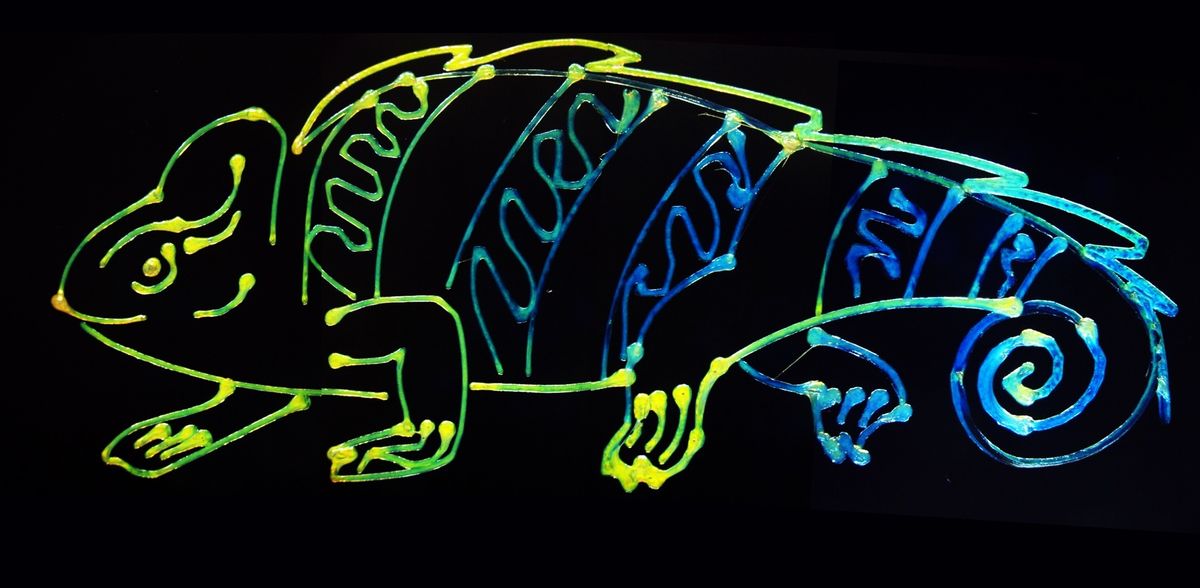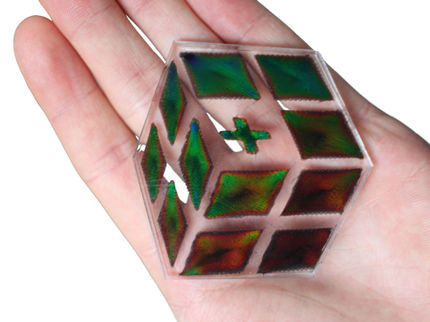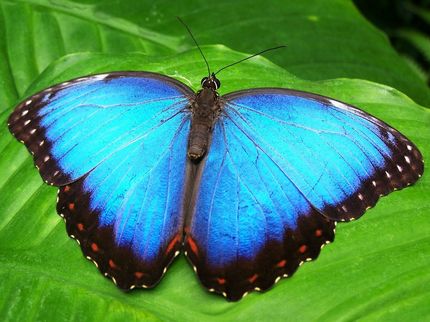Chameleons inspire new multicolor 3D-printing technology
Researchers developed a sustainable technique to 3D print multiple dynamic colors from a single ink
Inspired by the color-changing ability of chameleons, researchers developed a sustainable technique to 3D-print multiple, dynamic colors from a single ink.
“By designing new chemistries and printing processes, we can modulate structural color on the fly to produce color gradients not possible before,” said Ying Diao, an associate professor of chemistry and chemical and biomolecular engineering at the University of Illinois Urbana-Champaign and a researcher at the Beckman Institute for Advanced Science and Technology. The study appears in the journal PNAS.
“This work is a great illustration of the power of collaboration,” said coauthor Damien Guironnet, an associate professor of chemical and biomolecular engineering.
In this study, Diao and her colleagues present a UV-assisted direct-ink-write 3D printing approach capable of altering structural color during the printing process by tuning light to control evaporative assembly of specially designed crosslinking polymers.
“Unlike traditional colors which come from chemical pigments or dyes that absorb light, the structural colors abundant in many biological systems come from nano-textured surfaces that interfere with visible light. This makes them more vibrant and potentially more sustainable,” said Sanghyun Jeon, the lead author and a graduate student in the Diao Lab.
The researchers can produce structural colors in the visible wavelength spectrum from deep blue to orange. While an artist might use many different paints to achieve this color gradient, the research team uses a single ink and modifies how it is printed to create the color gradient.
“The work shows the benefit of us all having learned from each other by sharing our successes and challenges,” said coauthor Simon Rogers, an associate professor of chemical and biomolecular engineering.
“Only by working together could we design this system at the molecular level to yield such fascinating properties," said coauthor Charles Sing, an associate professor of chemical and biomolecular engineering and materials science and engineering.
Original publication
Sanghyun Jeon, Yash Laxman Kamble, Haisu Kang, Jiachun Shi, Matthew A. Wade, Bijal B. Patel, Tianyuan Pan, Simon A. Rogers, Charles E. Sing, Damien Guironnet, Ying Diao; "Direct-ink-write cross-linkable bottlebrush block copolymers for on-the-fly control of structural color"; Proceedings of the National Academy of Sciences, Volume 121, 2024-2-20
Original publication
Sanghyun Jeon, Yash Laxman Kamble, Haisu Kang, Jiachun Shi, Matthew A. Wade, Bijal B. Patel, Tianyuan Pan, Simon A. Rogers, Charles E. Sing, Damien Guironnet, Ying Diao; "Direct-ink-write cross-linkable bottlebrush block copolymers for on-the-fly control of structural color"; Proceedings of the National Academy of Sciences, Volume 121, 2024-2-20
Organizations
Other news from the department science

Get the chemical industry in your inbox
By submitting this form you agree that LUMITOS AG will send you the newsletter(s) selected above by email. Your data will not be passed on to third parties. Your data will be stored and processed in accordance with our data protection regulations. LUMITOS may contact you by email for the purpose of advertising or market and opinion surveys. You can revoke your consent at any time without giving reasons to LUMITOS AG, Ernst-Augustin-Str. 2, 12489 Berlin, Germany or by e-mail at revoke@lumitos.com with effect for the future. In addition, each email contains a link to unsubscribe from the corresponding newsletter.






























































